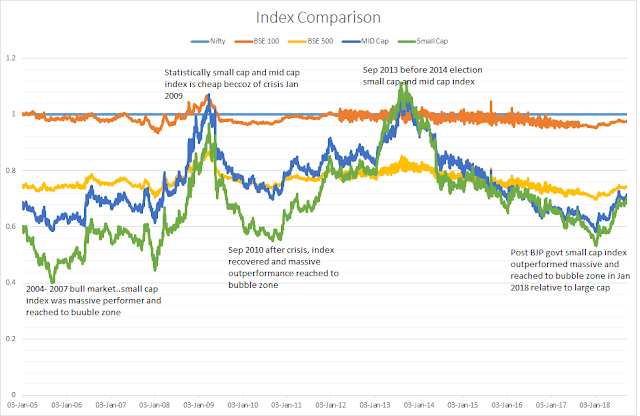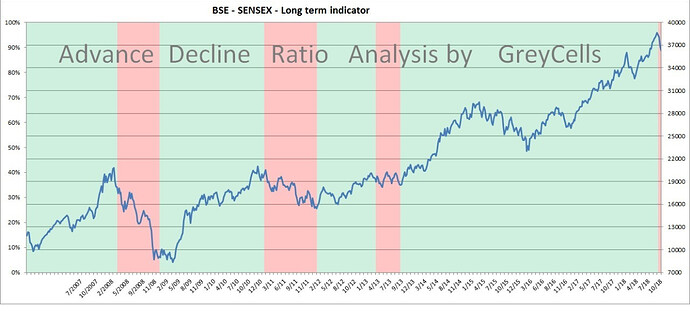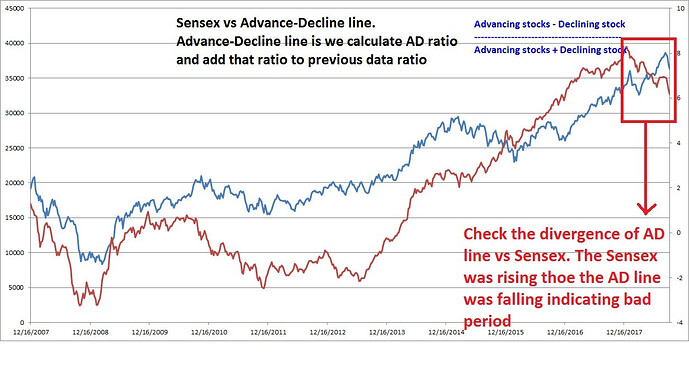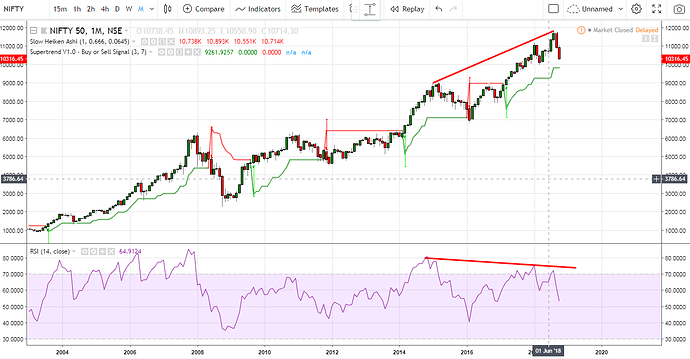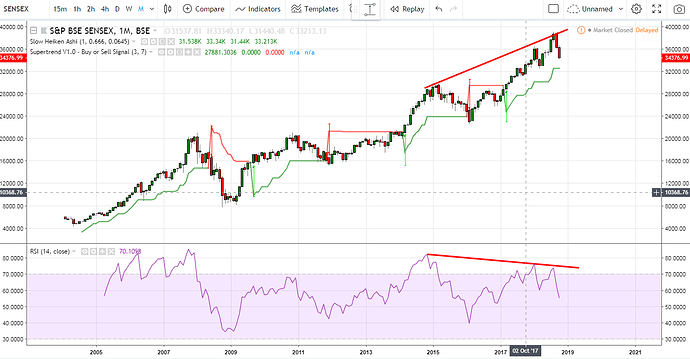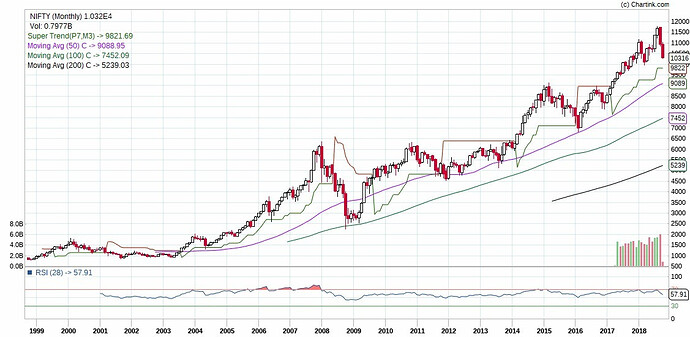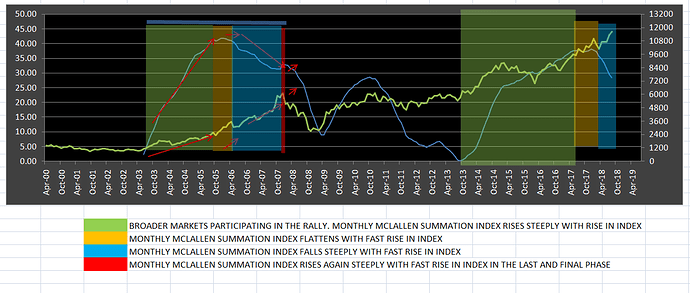NIFTY REACHING CROSSING 28 PE MULTIPLE
| DATE | PE | PB | NIFTY | EPS | BOOK VALUE | ROE % = EPS/BOOKVALUE | GRAHAMS NO=PE * PB | GRAHAMS NO: / ROE |
|---|---|---|---|---|---|---|---|---|
| 11-Feb-00 | 28.47 | 5.11 | 1637 | 57.5 | 320.3 | 17.95 | 145.5 | 8.11 |
| 8-Jan-08 | 28.29 | 6.55 | 6179 | 218.4 | 943.4 | 23.15 | 185.3 | 8.00 |
| 31-Jul-18 | 28.22 | 3.7 | 11356 | 402.4 | 3069.2 | 13.11 | 104.4 | 7.96 |
Above is a tabulation of Nifty when crossed 28 PE. Here the difference from 2000 and 2008 scenario is that PB ratio still is very much below the levels of 2000 and 2008. So I tried to combine all the ratios to find what was common in 2000 and 2008.
Here I took Graham Number = PE * PB.
Then I took ROE as EPS / Book Value. (This assumption is not accurate).
Then I took Grahams Number / ROE
In both cases in 2000 and 2008 I got the Number as around 8.
So I had earlier decided to exit the portfolio when the this metric (Grahams number / ROE) reaches 8.
Now Grahams number / ROE is approaching 8 (As on 31.07.2018 closing it is 7.96)
MONTHLY ADVANCE DECLINE RATIO AND ANATOMY OF BULLL MARKET
This analysis I had done with monthly advance decline ratio of NSE listed stocks
Here I took the Mclallen Summation Index and have observed a few things in the bull market of 2003-2008
First stage of bull market: 2003 - 2005: steep rise in Monthly Mclallen Summation Index along with rally in Index indicating broader market participating in the rally
Second Stage:First half of2006: Flattening of Summation Index along with steep rally in Index indicating smart money starts getting out of broader markets and entering index stocks. But still broader markets are held due to retail participation
Third stage : second half 2006 – end 2007: Steep fall in summation Index along with rally in Index. Heavy fall in broader markets due to exit of fund houses from them and towards end due to panic by retailers.
Fourth Stage and final stage : 2007 Nov, Dec: Again Monthly Mclallen Summation Index rising. broader markets once again starts to perform due to retails coming back.
By this time in 2008 January the Index had crossed 28 PE
The same situation is being repeated now…And …a huge participation for HDFC AMC IPO…I feel quite uneasy and also a bit confused as a strong India growth story is ahead
This is a tweet by Raoul Pal regarding US 2yr rates. what ever situation occurs in any country ultimately it is the US markets is what controlls the global markets
https://twitter.com/RaoulGMI/status/1023193406397448192
This is my study regarding fib time zones in nifty

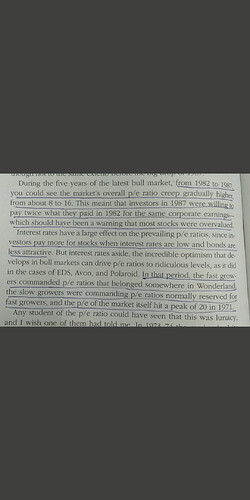

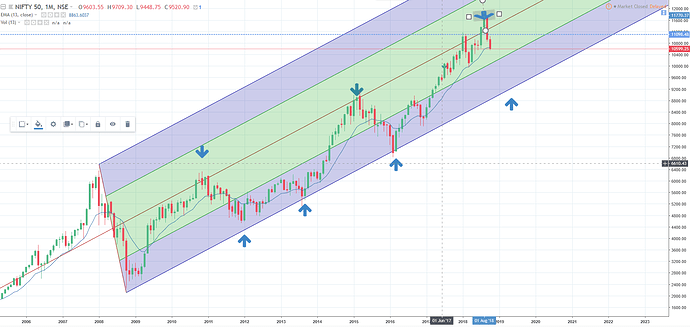
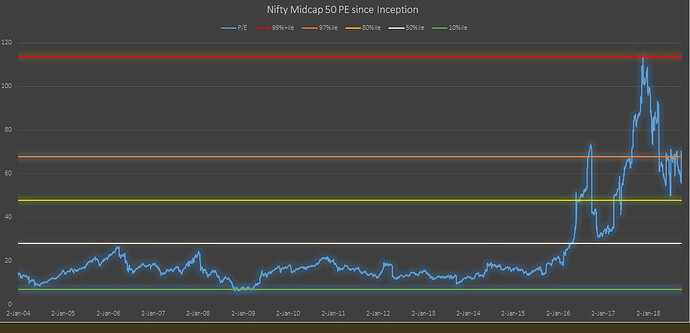
 .
. , I am 90 percent in cash and I expect a grinding bear market for 12-24 months. But I am very selectively now open to deploying to one or two stock a month with very little allocations and the total new investments over last month are around one percent of the portfolio. There will be ample time to buy over the next couple of years. I am in no rush.
, I am 90 percent in cash and I expect a grinding bear market for 12-24 months. But I am very selectively now open to deploying to one or two stock a month with very little allocations and the total new investments over last month are around one percent of the portfolio. There will be ample time to buy over the next couple of years. I am in no rush. .
.